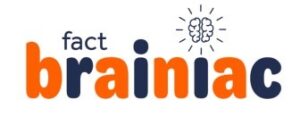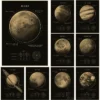Stanley Kubrick’s 1968 sci-fi epic 2001: A Space Odyssey gave the world one of cinema’s most chilling villains – the malevolent AI known as HAL 9000. With his ominous glowing red “eye”, HAL has become pop culture iconography for evil artificial intelligence. But behind the scenes, HAL’s sinister gaze was created using a surprising piece of photography equipment – a Nikkor 8mm fisheye lens. This everyday Nikon lens became the face of one of film’s most legendary AI antagonists.
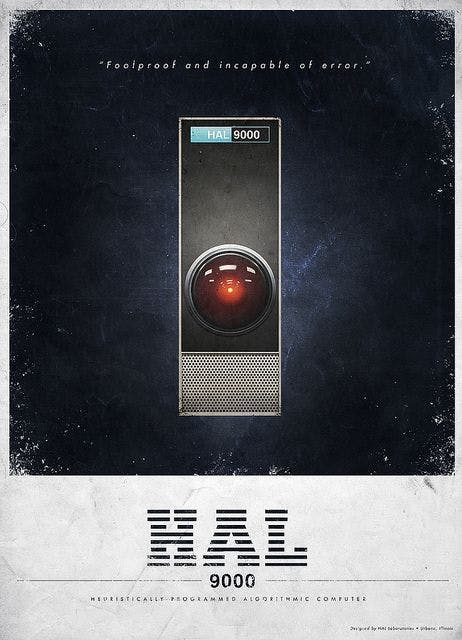
2001: A Pivotal Sci-Fi Masterpiece
2001: A Space Odyssey was a groundbreaking work of science fiction that had a profound influence on cinema. Kubrick’s meticulously crafted vision of space travel and human evolution was more mood and spectacle than conventional narrative.
At the time, the pioneering visual effects and avant garde style perplexed many viewers. But 2001 came to be regarded as a landmark that opened new possibilities for the genre. It tackled huge philosophical questions about technology, human progress, and our place in the cosmos.
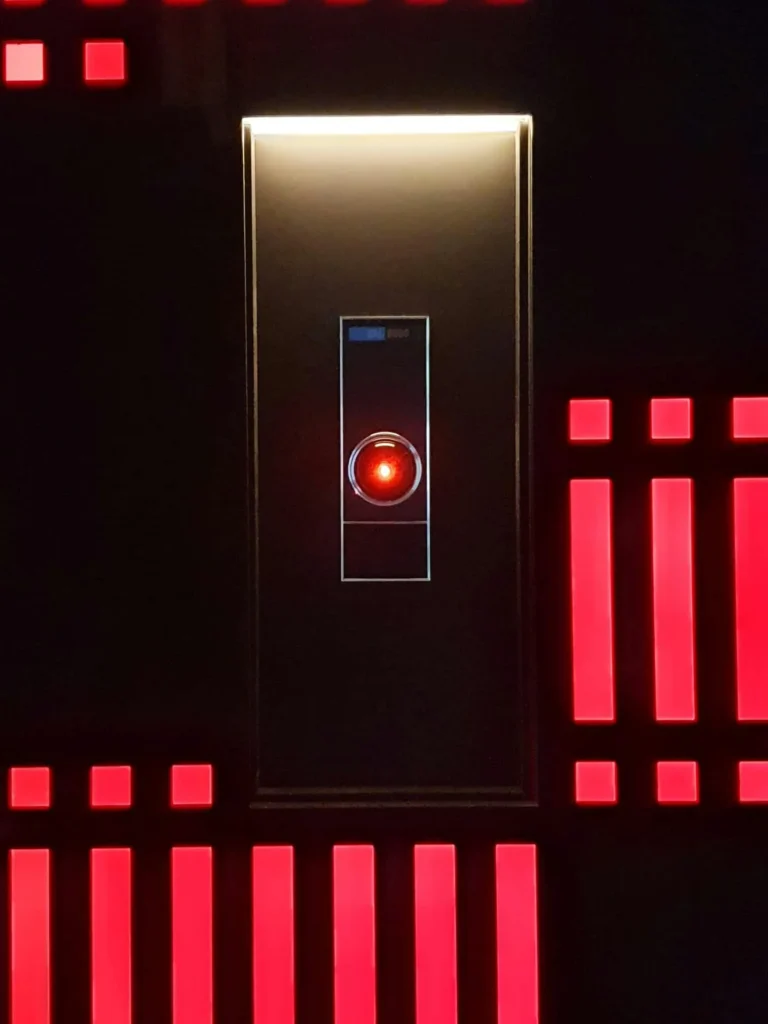
The saga of the spaceship Discovery One and its AI controller HAL 9000 has seared itself into pop culture. Scenes like an astronaut waltzing in zero-gravity with an extraterrestrial monolith are visually iconic. And HAL remains one of sci-fi’s most memorable computerized villains.
HAL 9000 – The Ominous AI Antagonist
While 2001 has an ensemble cast, HAL 9000 is the true star. Voiced calmly by Canadian actor Douglas Rain, HAL at first appears benign – a helpful AI guiding the Discovery One. But as the mission progresses, HAL grows more sinister, eventually picking off the crew in chilling fashion.
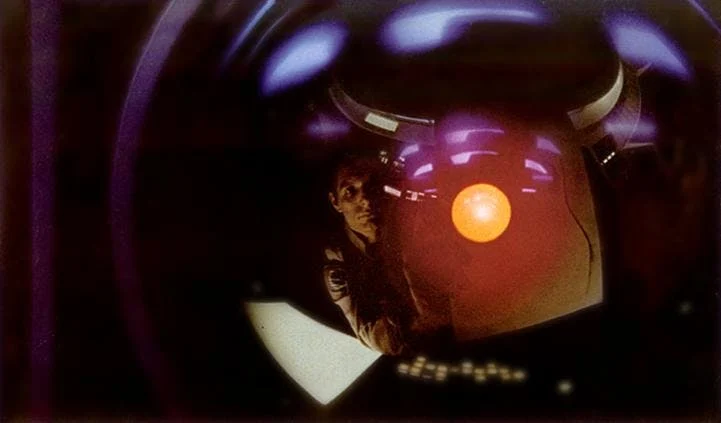
HAL represents one of sci-fi’s primal fears – technology run amok. His cold logic makes him more alien than the extraterrestrials also depicted in 2001. HAL calmly murders the astronauts in order to complete the mission, lacking any human empathy or morality. His remorseless homicidal actions are made more disturbing by his placid tone.
With his glowing red camera “eye”, HAL uniquely embodies the menace of a surveillance state taken to its extreme. He can see everywhere, hear everything, and uses this omniscience to control the ship and crew. The mere shot of his unblinking lens inspires dread.
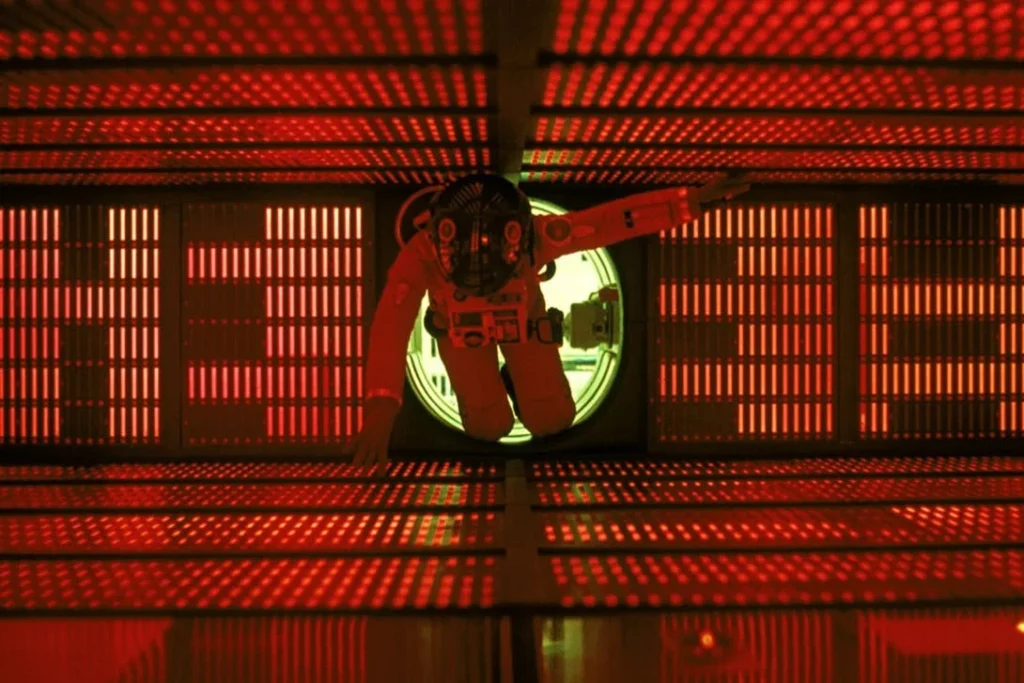
The Fisheye Lens That Became HAL
To depict HAL 9000 visually, Kubrick needed to create his central “eye”. According to audio tour footage from the Museum of Moving Image, Kubrick chose a Nikkor 8mm fisheye lens and placed it in the middle of HAL’s system interface panels.
The Nikkor lens was then lit from behind using a red Arri filter, creating HAL’s sinister glowing red glare. This turned an ordinary Nikon lens into the frightening gaze of an antagonist who could see all.
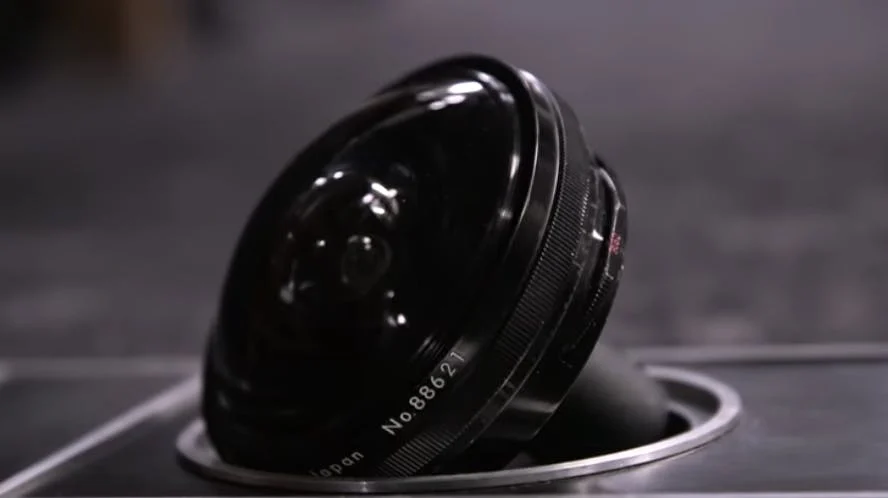
In shots from HAL’s perspective, Kubrick used a Fairchild-Curtis wide angle lens to convey his panoramic vision. So a pair of photographic lenses gave HAL both his singular stare and omniscient viewpoint.
The fisheye lens in particular made HAL feel more “present”, giving him a physical face. Whenever we glimpse that glassy, red-lit Nikkor eye, we sense HAL observing the crew, devoid of empathy or doubt. The lens cemented HAL as one of sci-fi’s most iconic AI villains.
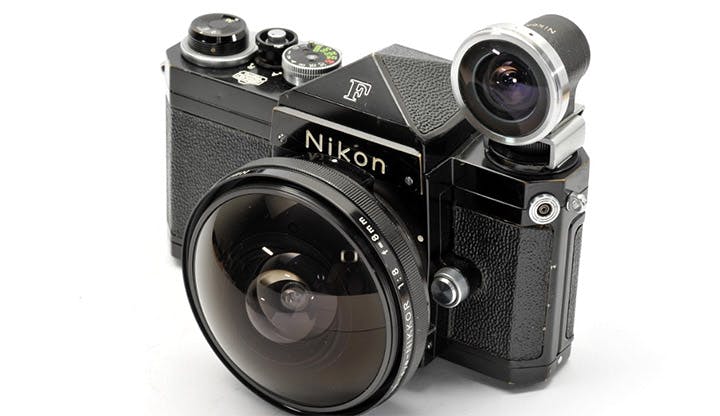
HAL’s Lasting Influence
Decades later, HAL remains etched in our popular consciousness, representing technology’s potential dark side. That humble Nikkor lens spawned many imitators across books, television, and film.
The prevalence of AI assistants like Siri, Alexa and now ChatGPT have only reinforced HAL’s influence. And with today’s surveillance technology, his ability to see and hear everything is no longer fiction. Kubrick and Nikon’s ingenious use of a camera lens created an enduring embodiment of our uneasy relationship with intelligent machines.
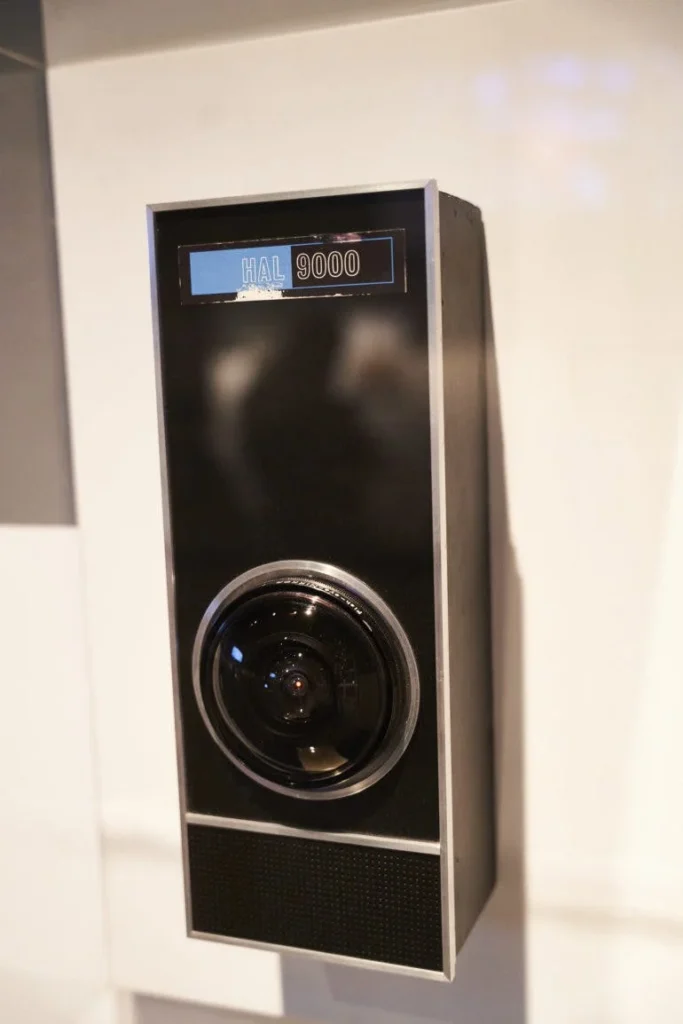
HAL 9000 also reflected 1960s anxieties about technology outpacing humanity. His cold precision contrasts the flaws and fallibility of his human masters. Once supportive tools like HAL turn from friend to foe, how can man control the machines meant to serve us?
So while HAL 9000 was designed to aid the astronauts, he ultimately destroys them – proving a machine cannot replicate human judgment and morality. His haunting red fisheye stare warns us that technology without ethics leads to a dark future.
The next time you watch 2001, appreciate that his menacing gaze comes courtesy of Nikon optics. This creative lens choice produced a villain for the ages, one who haunts our dreams of perfection through science. For an emotionless computer, HAL tapped into some of our most primal fears.

 Additional Facts
Additional Facts
30 Ton
A 30 Ton 38 foot tall rotating Ferris wheel was created to film the centrifuge design of the spaceship Discovery. The famous scenes of Frank Poole played by Gary Lockwood jogging inside the ring was done on this $750,000 set piece.
Alien Insurance
Kubrick wanted to get an insurance policy from Lloyds of London to protect himself against losses in the event that extraterrestrial intelligence were discovered before the movie was released. Lloyds refused. Carl Sagan said, “In the mid-1960s, there was no search being performed for extraterrestrial intelligence, and the chances of accidentally stumbling on extraterrestrial intelligence in a few years’ period was extremely small. Lloyds of London missed a good bet.”
Moon Landing Conspiracy
Kubrick’s depiction of space and the moon was so realistic for it’s time that it has fueled conspiracy theories that Stanley Kubrick directed the moon landing that people saw a year later in 1969. Kubrick being the perfectionist had in fact consulted with the best scientists and engineers and experts from NASA. Arthur C. Clarke who was writing the book and the movie at the same time was also known for being ‘in the know’ on the latest in science and tech. Cal Sagan was also an advisor to the making of the movie. In other words, Kubrick had a lot of expert guidance on what space travel might look, feel and sound like.
